Affiliate links on Android Authority may earn us a commission. Learn more.
Galaxy Note 9 vs Galaxy S9 Plus: Which Galaxy do you belong to?
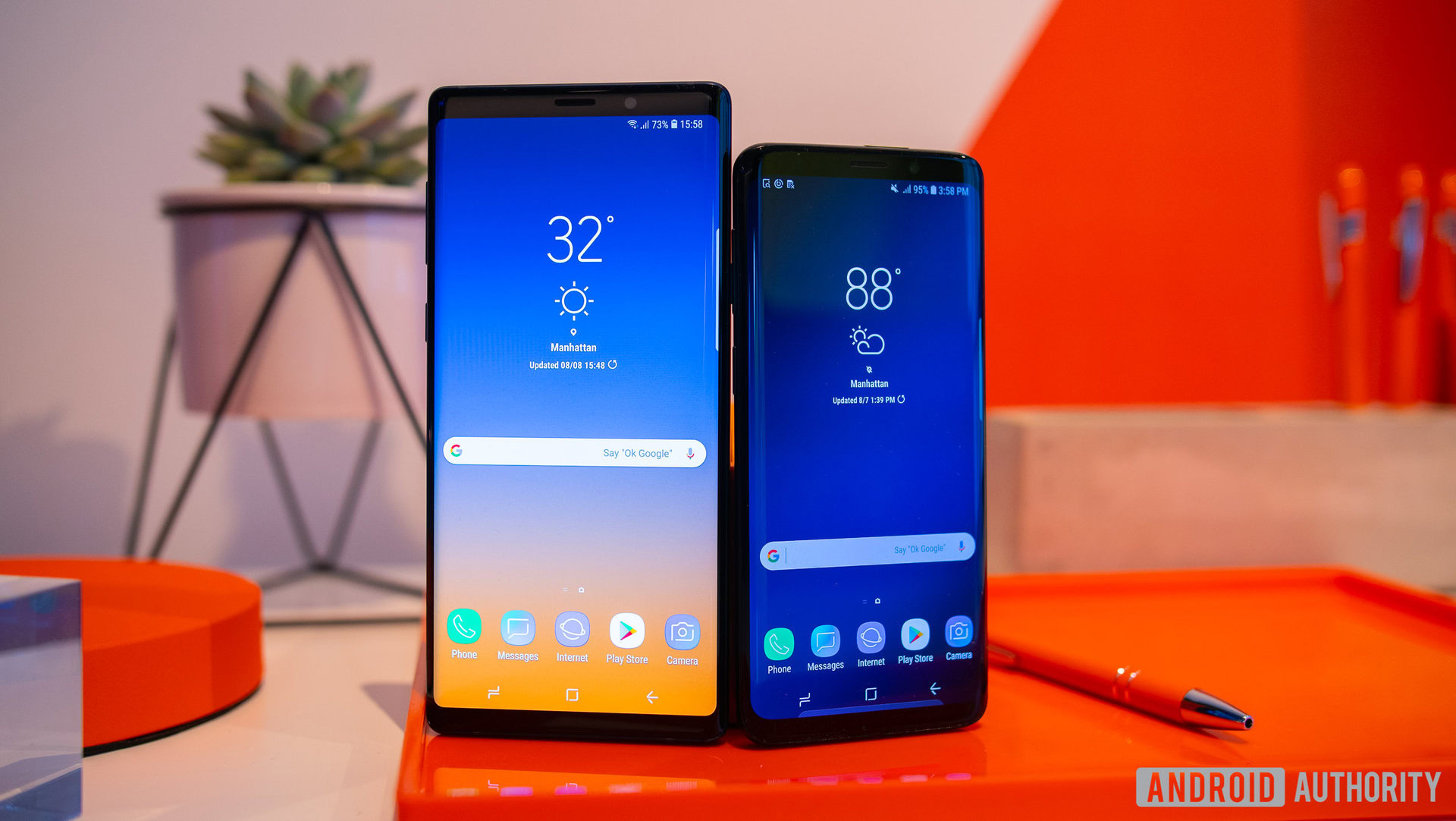
The Galaxy S9, Galaxy S9 Plus and Galaxy Note 9 – Samsung now has three flagship devices, each designed for a different person. But what are the differences and which one is right for you? After the launch of the Galaxy Note 9 today, let’s take a look at which Galaxy you belong to.
Read: Samsung Galaxy Note 9 specs: A noteworthy leap in performance?
Galaxy Note 9 vs S9 vs S9 Plus: What are the key differences?
There are a lot of similarities between Samsung’s flagship devices, as the company has employed a strategy of iteration ahead of the major design change expected next year with the tenth-generation Galaxy S.
The key differences between the Note 9, the S9, and the S9 Plus come down to how you plan to use your phone. Of course, there’s also the newer hardware you’d expect from the Galaxy Note 9, given it’s launching six months later than its Galaxy S counterparts.
The Galaxy S9 offers the smallest display of the three devices, measuring in at 5.8 inches, while the Galaxy S9 Plus measures 6.2 inches. The Galaxy Note 9 is bigger still, at 6.4 inches. All three devices use Samsung’s Super AMOLED display technology and offer Quad HD+ resolution. Technically, this means the Galaxy S9 is the densest of the three displays, although the differences are minimal and virtually unnoticeable in actual usage.
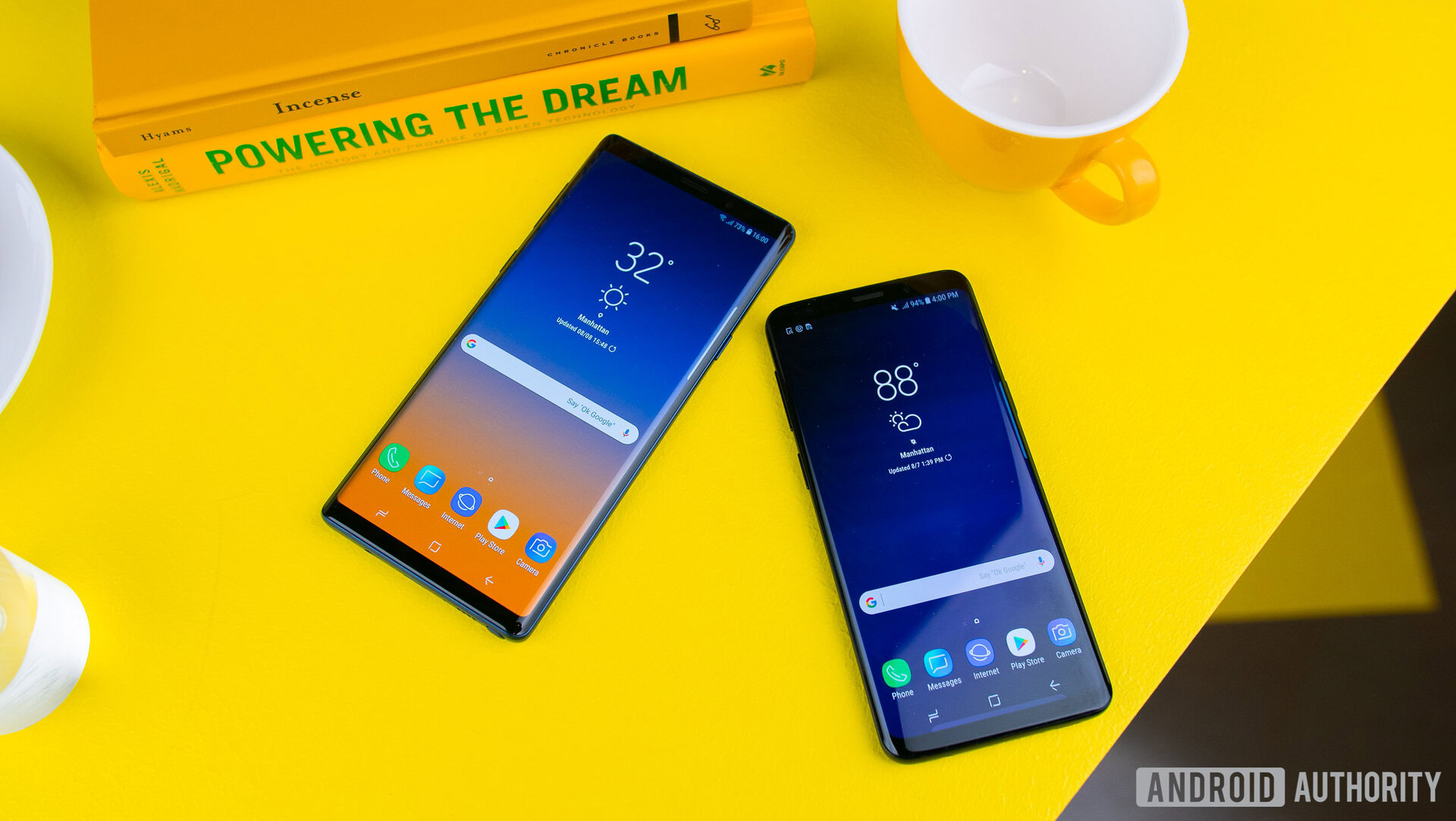
The Galaxy S9 and S9 Plus are powered by the Snapdragon 845 processor with 4GB and 6GB of RAM respectively, with a choice of 64GB, 128GB, or 256GB internal storage.
The Galaxy Note 9 is powered by the same chip, with a choice of either 6GB of RAM and 128GB of storage, or 8GB of RAM, and 512GB of storage. All three devices offer up to 512GB of expandable storage using a microSD card slot.
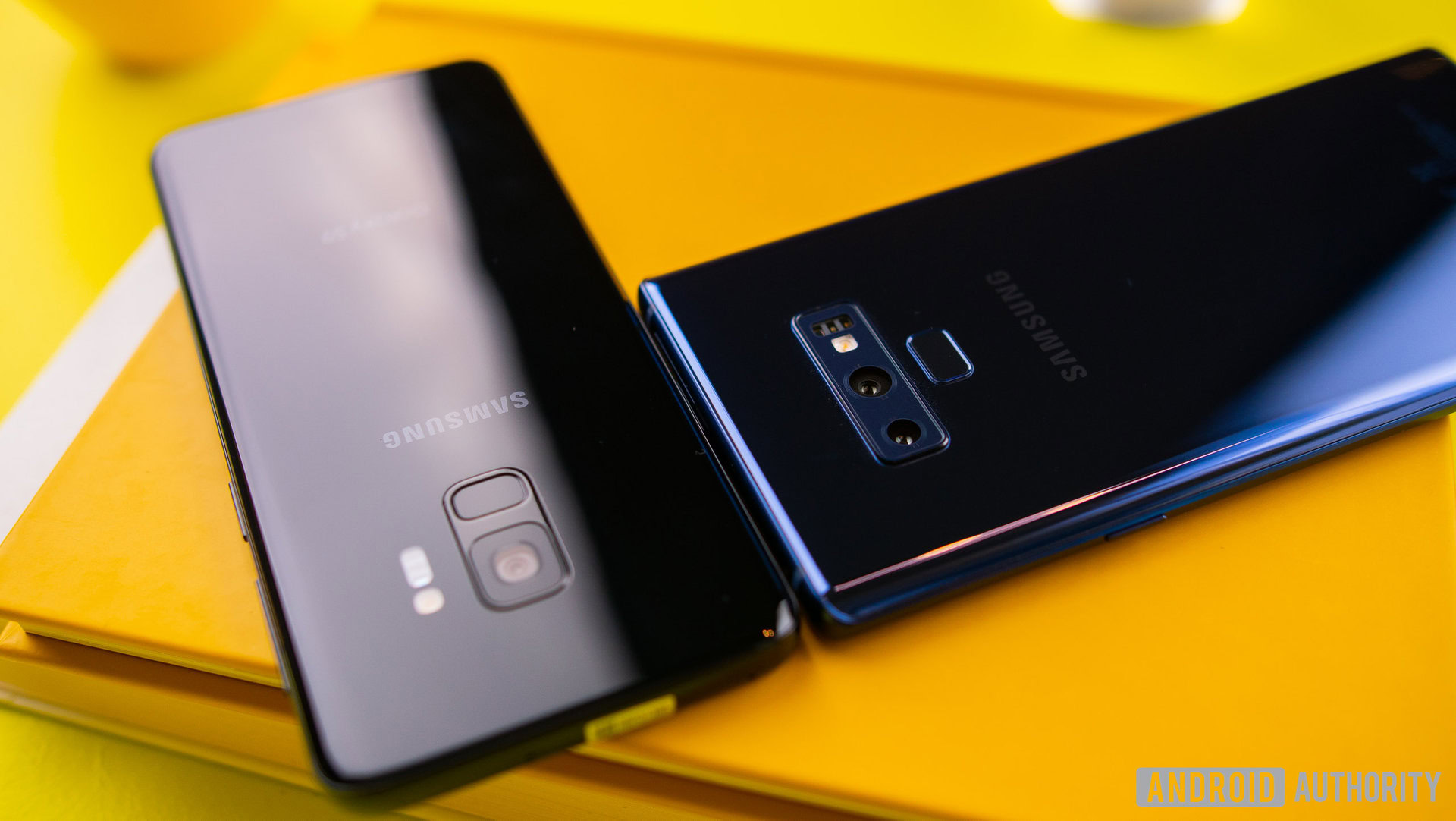
The biggest hardware difference is in the battery capacity. The Galaxy S9 features a 3,000mAh battery that offered between five and six hours screen-on time in our testing. The Galaxy S9 Plus has a slightly larger 3,300mAh battery that boosted the screen-on time by around an hour. Meanwhile, the Galaxy Note 9 boosts the battery to a much larger 4,000mAh. We’ve been unable to the test the Note 9 as of this writing, but we’d expect it to offer between two and three hours more battery life than the Galaxy S9 series.
3,300 vs 3,500 vs 4,000mAh: The biggest hardware difference is in the battery capacity.
The most noticeable of changes is in the camera, as the Galaxy S9 has a single camera, and the Galaxy S9 Plus and Galaxy Note 9 offer dual cameras. The main camera on all three devices is a 12MP sensor with dual aperture, dual-pixel autofocus, 1.4µm pixel size, and optical image stabilization. The secondary camera on the S9 Plus and Note 9 is also a 12MP sensor with 1µm pixel size, f/2.4 aperture, and OIS. The secondary camera offers 2x optical zoom and allows you to take pictures with bokeh and edit the focal point after capture.
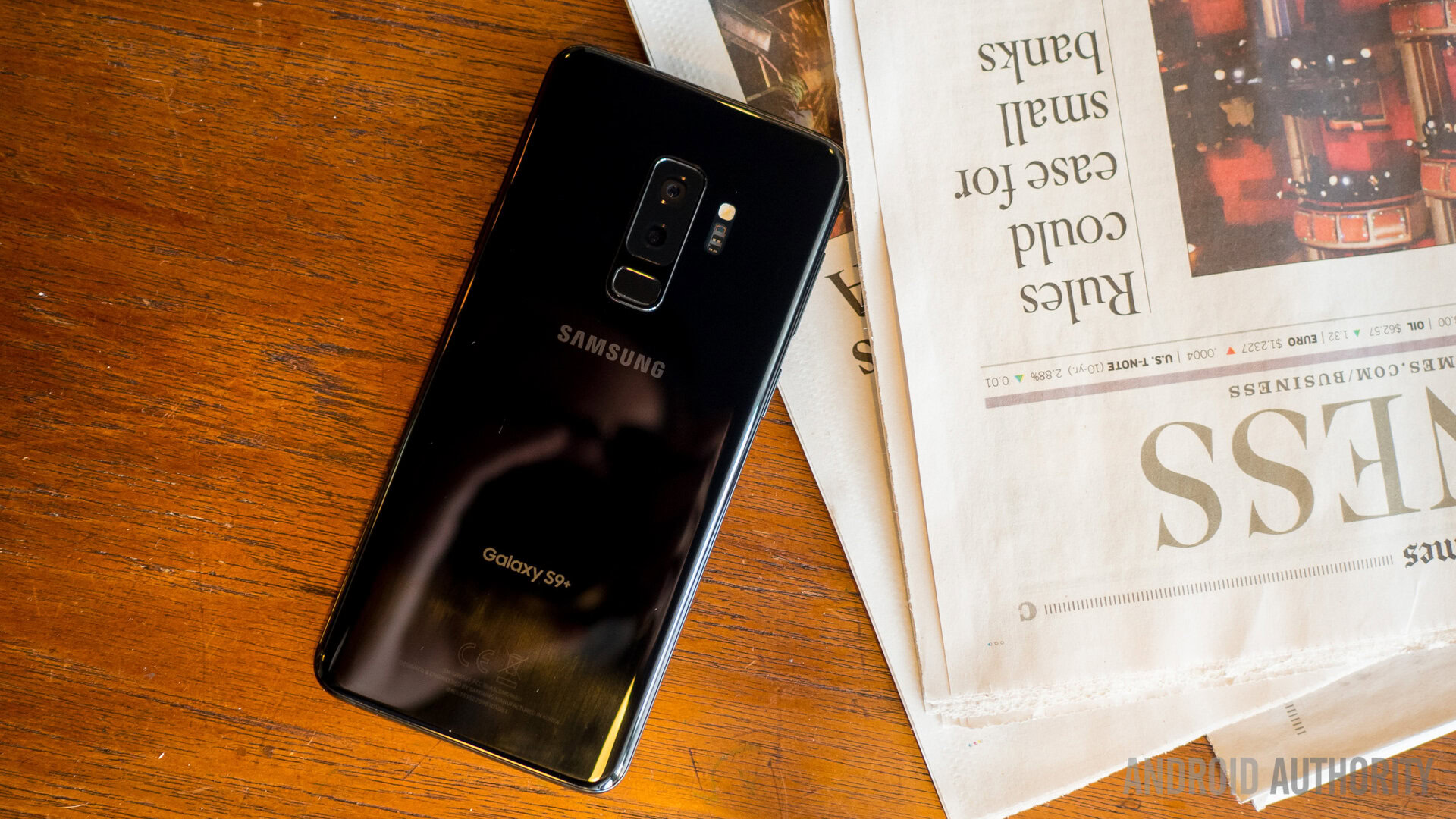
Although the hardware is the same in the Galaxy S9 Plus and Galaxy Note 9, the latter does use machine learning techniques to make the camera smarter. The Galaxy Note 9 can detect the main subject of a scene – such as a pet, sunset, flower, waterfall, etc. – and automatically tweak the settings to get the best shot. This aims to replicate the adjustments that a professional photographer would make, without the need to understand terms such as ISO, shutter speed, aperture, exposure, and white balance.
The Note 9 is also able to detect when you take a picture and someone has blinked, there’s a smudge on the lens, the image is blurry, or the subject is washed out due to excessive backlight. Normally, you’d have to check the image and then retake it, but Samsung says the camera will automatically look for these issues and prompt you to retake the image, before you lose the opportunity.
The Note 9 camera will automatically look for issues and prompt you to retake the image, before you lose the opportunity.
All three of Samsung’s smartphones support the company’s Dex desktop solution, but how they implement it is the key difference. The Galaxy S9 and Galaxy S9 Plus require you to use either the Dex station or the Dex Pad, while the Galaxy Note 9 allows you to run Dex using just a USB Type-C to HDMI cable, just like the Samsung Galaxy Tab S4.
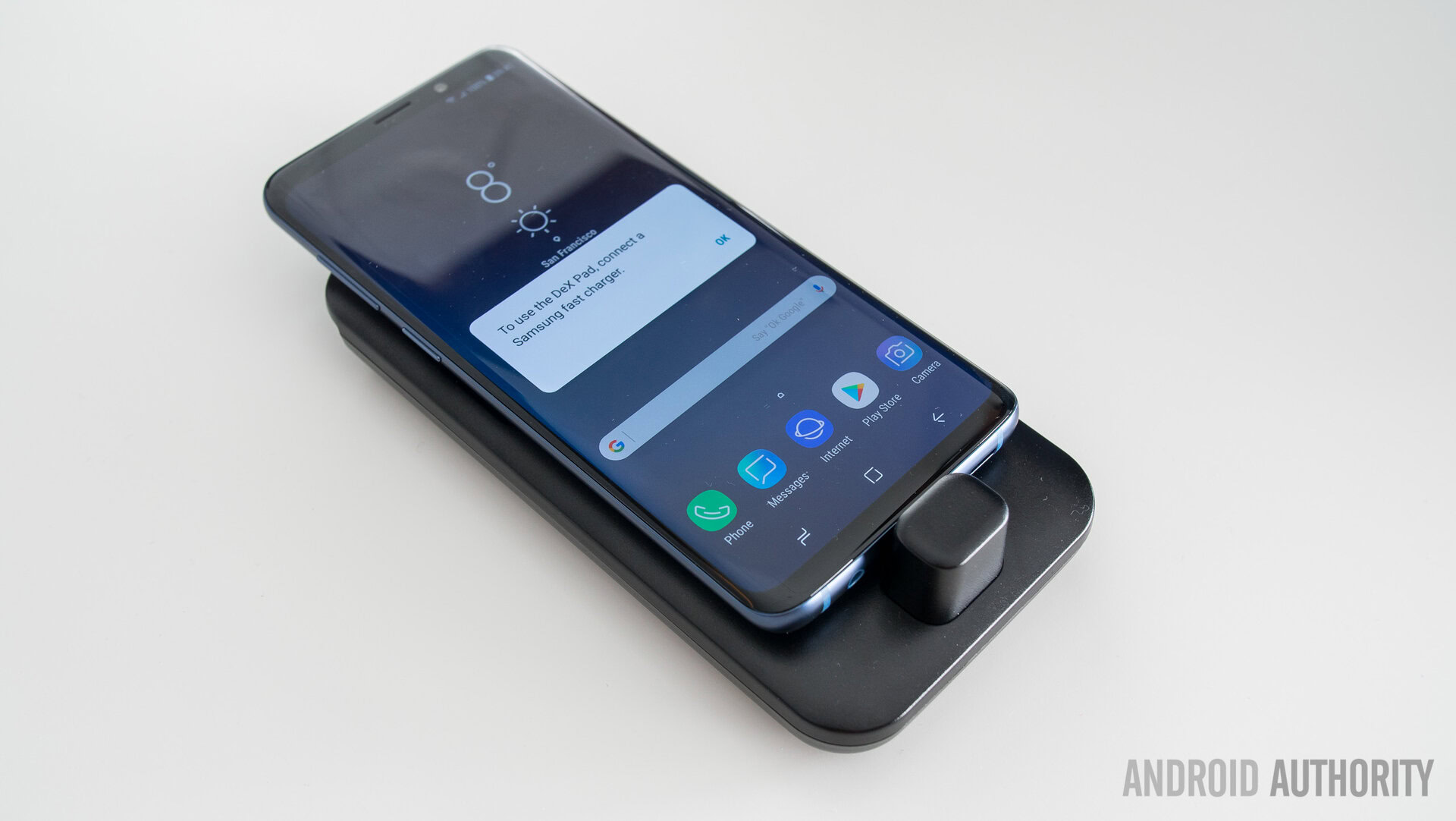
Which Galaxy do you belong to?
There are many similarities between the Samsung Galaxy S9 vs Galaxy S9 Plus vs Galaxy Note 9. These include the Samsung Experience software, IP68 dust and water resistance, expandable storage, and Samsung’s Knox security solution.
Despite the similarities, there are enough key differences between the three devices to ensure they cater to different types of users. So, which Galaxy do you belong to?
Galaxy Note 9: For the power user — productivity, creativity, performance, gaming
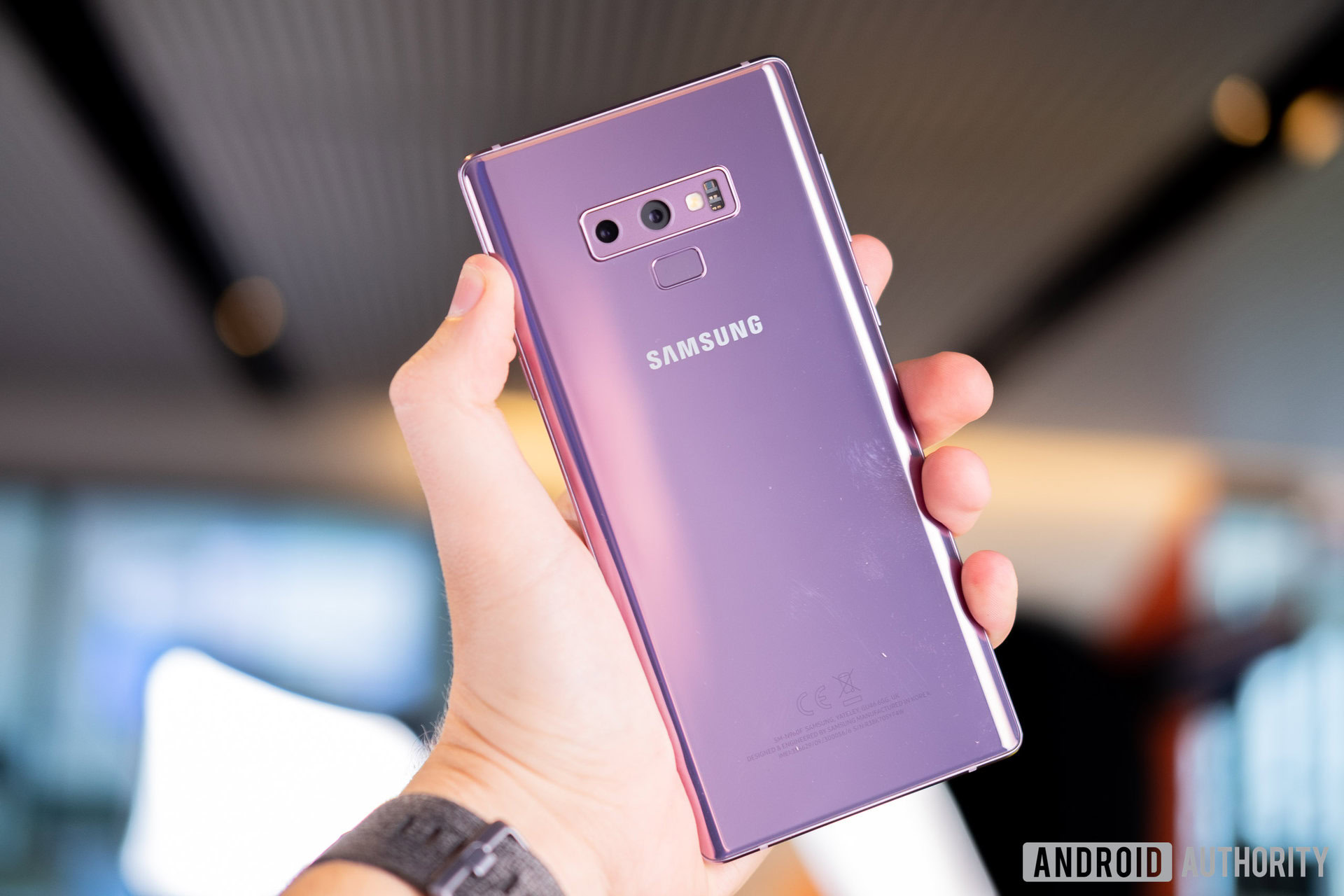
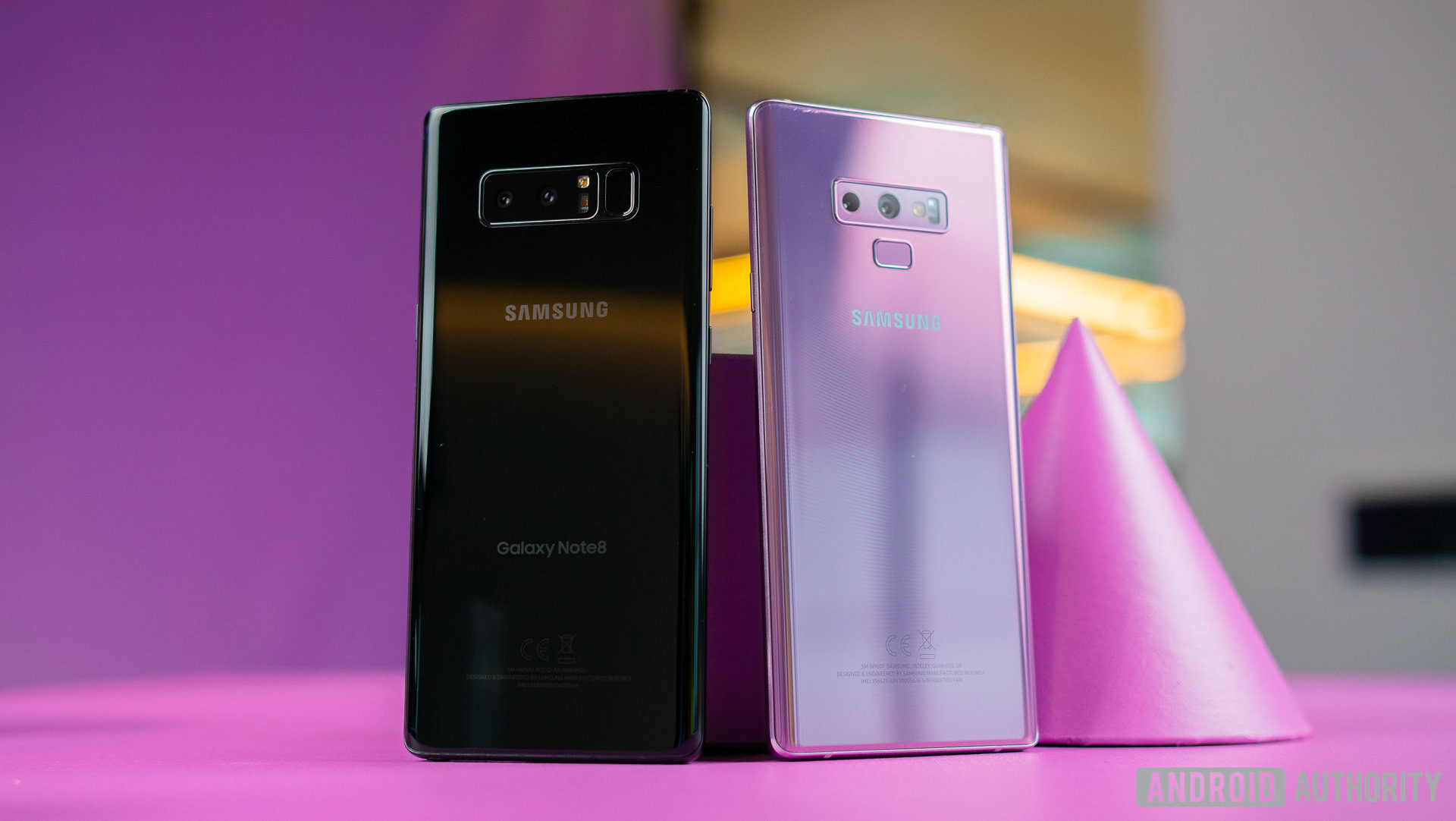
The Galaxy Note 9 offers enough features to keep most power users happy. From the productivity and creativity features offered by the S Pen to the performance of 8GB of RAM, Snapdragon 845, and 512GB of storage, there’s little hardware you could want for if you opt for the Galaxy Note 9.
The thermal cooling system and GPU tweaks offer improved gaming performance, while the ability to run Dex for a desktop experience without the need for a docking station makes this device perfect for people who need to work on the go. The larger 4,000mAh battery should keep you powered through the most intensive of tasks and makes this device perfect for the power user.
Galaxy S9 Plus: The best of both worlds
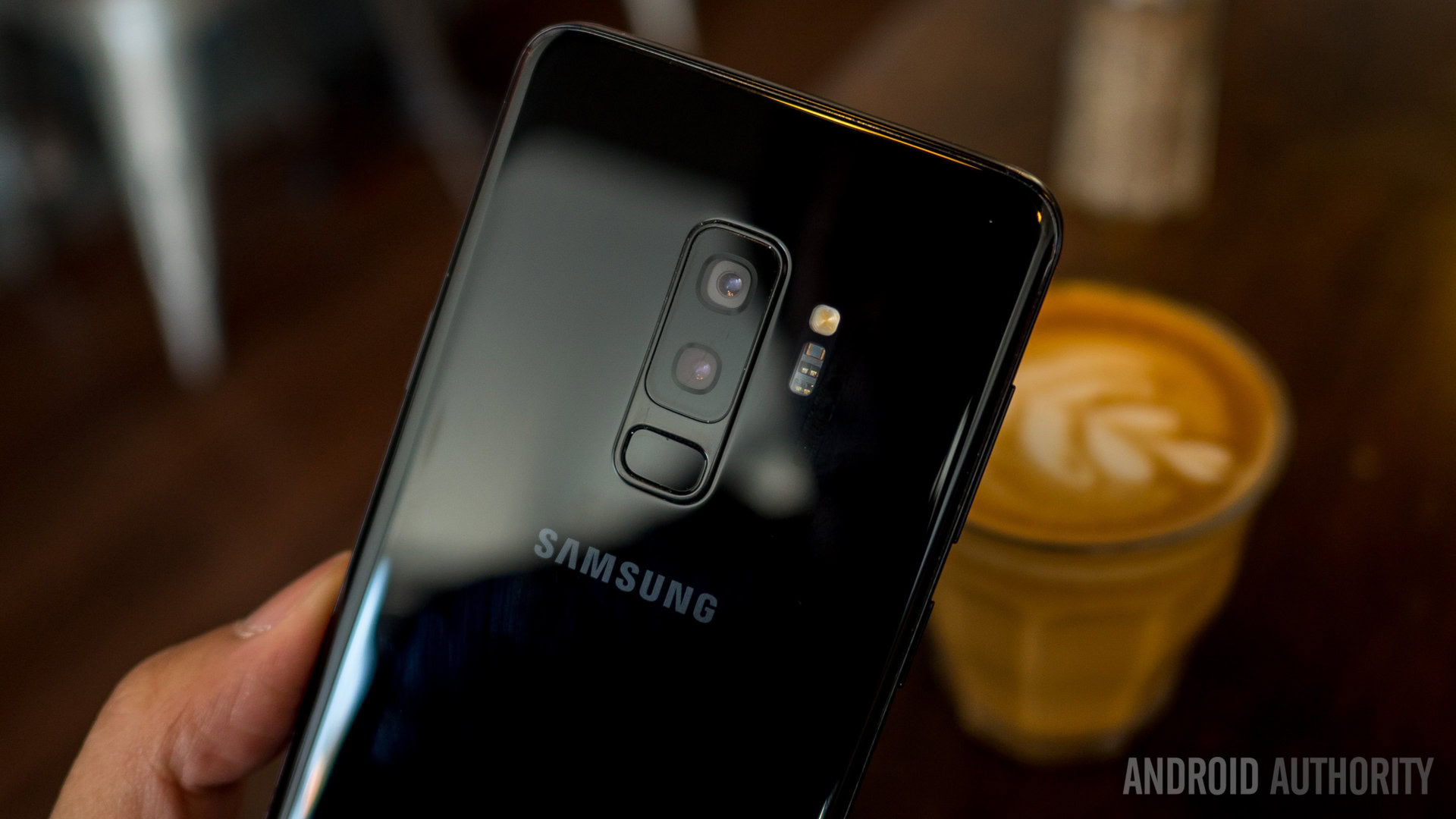
The Galaxy S9 Plus removes a few of the core productivity and creativity features, in favor of a more balanced approach (and a lower price). Offering the same core camera features — without the AI assistance — as well as plenty of RAM, an excellent screen and a similar big-screen experience as the Note 9, it’s ideal if you want the best of both worlds.
Galaxy S9: For an introduction to the Galaxy
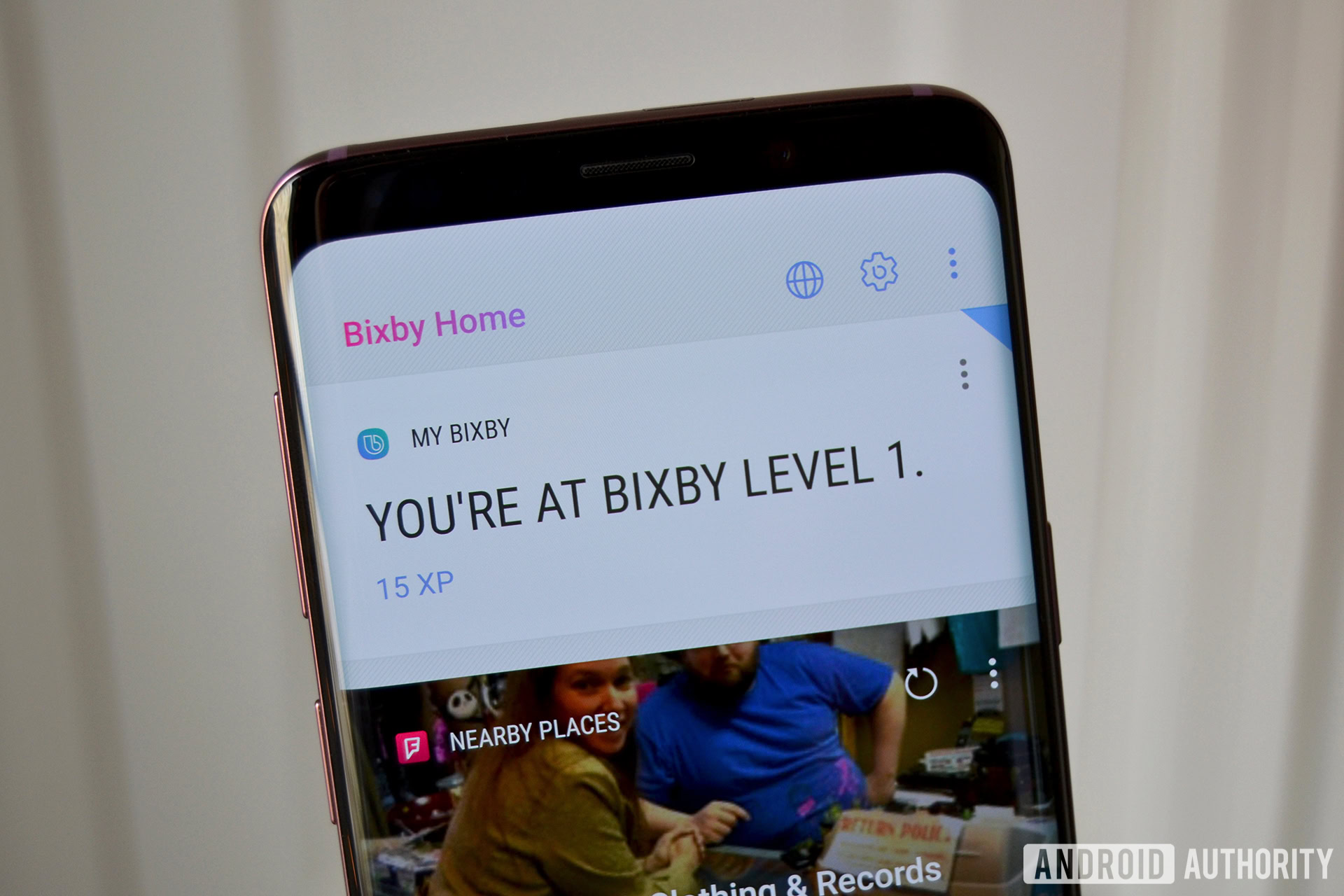
The Galaxy S9 removes features such as the dual camera and focuses on the core features of Samsung’s product lineup. If you’re looking for a phone with great performance, a good camera (albeit without any secondary camera tricks), IP68 dust and water resistance, and an overall excellent smartphone experience at a good price, the Galaxy S9 is the one to pick.
Each of these smartphones offers the same overall experience, but at vastly different price points.
Which Galaxy would you pick?
At their core, each of these smartphones offers the same overall experience, but at vastly different price points. The Galaxy S9 starts at $719.99 and goes up to $839.99, while the Galaxy S9 Plus starts at $839.99 and goes up to $959.99. The Galaxy Note 9 starts at $999 and goes up to $1,249 for the version with 8GB of RAM and 512GB of storage.
With the differences outlined and a large price difference between the three devices, which Galaxy would you pick between the Galaxy S9 vs Galaxy S9 Plus vs Galaxy Note 9? Vote in the poll and let us know your views in the comments below!
Be sure to catch up on our Galaxy Note 9 content below:
- Samsung Galaxy Note 9 hands-on: A Fortnite away
- The Galaxy Note 9 is here: Everything you need to know
- Samsung Galaxy Note 9 vs Galaxy Note 8: Worth the upgrade?
- Fortnite for Android beta arriving exclusively to Samsung, for now
- Samsung Galaxy Watch is here: A smartwatch that ticks like an analog watch
- AKG headphones vs Fortnite V-Bucks: Which Note 9 offer is the better value?
- Samsung Galaxy Note 9 pricing and availability: Your wallet will hate you
- 7 things you can do with the Galaxy Note 9’s Bluetooth S Pen
- Samsung announces Galaxy Home smart speaker and Bixby improvements